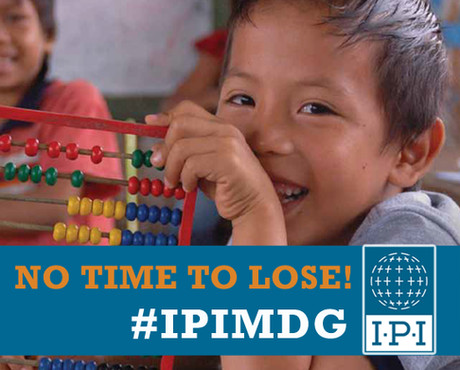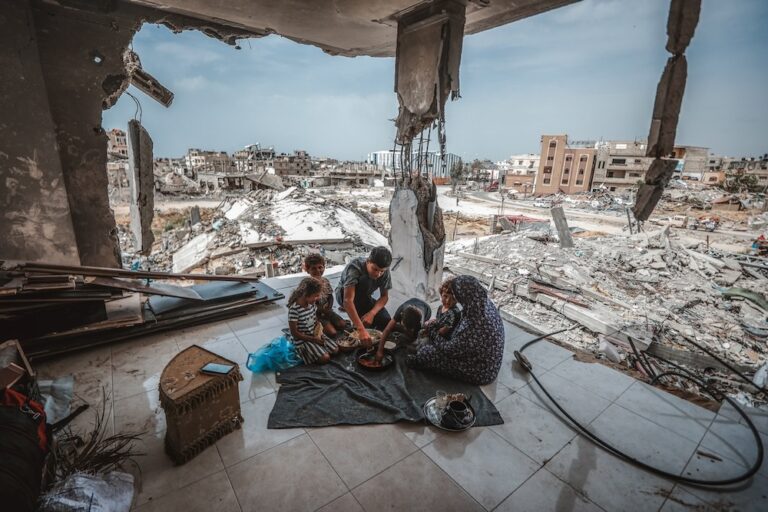As part of its commemoration of Human Rights Day on 10 December, IPI will publish the "Reporter's Guide to the Millennium Development Goals: Covering Development Commitments for 2015 and Beyond", a first-of-its-kind manual for journalists on how to cover human development and, thereby, remind the public of government commitments to meeting the Millenium Development Goals.
UPDATE from IPI: IPI MDG handbook now available for download (23 January 2014)
Two years and 26 days. That’s how long governments have to ensure that the UN Millennium Development Goals (MDG), announced in the year 2000 to soaring declarations about bettering the state of humanity, will be met. With just one extra push, a number of targets can be attained; others are in desperate need of catch-up. Either way, the task before many nations is critical.
In order to aid in that effort, the International Press Institute (IPI) will publish the Reporter’s Guide to the Millennium Development Goals: Covering Development Commitments for 2015 and Beyond, a first-of-its-kind manual for journalists on how to cover human development and, thereby, remind the public of government commitments to meeting the MDGs.
The IPI Guide will be launched during an online event on Dec. 10, as part of IPI’s commemoration of Human Rights Day. The event will include webinars and live video interviews with the book’s editors and some of its authors, who will also be available for question-and-answer sessions throughout the day. A detailed programme of the online launch of the Guide as well as detailed instruction on how to join this conversation are available on the IPI’s website.
A PDF of the Guide, published in four languages – English, Spanish, French, and Portuguese – is available upon email request to the IPI Secretariat [contact@freemedia.at ]. For quick reference, the Guide’s Table of Contents is available here and some of the articles will be posted to the same URL throughout the launch event on Dec. 10.
Written by fellow journalists with deep and diverse experience covering stories that impact communities across the globe, the Guide contains nearly 200 pages of concrete advice on how to effectively report on 14 development-related issues. These include not only the eight “core” MDG themes, including poverty, gender equality, and education, but also newly acknowledged roadblocks to progress: corruption, energy poverty, and lack of government transparency, among others.
The book’s co-editor, Venezuelan journalist Mariela Hoyer Guerrero, said the book could not be more perfectly timed. “Journalists work passionately every day to improve their societies, but having an upcoming date in the calendar gives strength to stories about social issues that they enjoy covering,” she explained.
Hoyer added: “Furthermore, journalists are accustomed to deadlines and motivated when one is approaching. An important global milestone, the 2015 MDG deadline gives journalists an even greater reason to cover development. The book we are now publishing allows reporters to make the most of this opportunity, enriched by the experiences of their colleagues from all over the world”.
The Guide also seeks to arm journalists with the big picture of where we are with the MDGs – and where we want to go. For that reason, all five UN Regional Commissions provide an update on MDG achievement in their member countries and offer advice as to how the press can improve coverage. The UN Development Programme (UNDP) describes the post-2015 MDG agenda and the OPEC Fund for International Development (OFID) explains why it considers energy poverty to be the missing MDG.
Indeed, while the immediate focus is the looming deadline, the Guide will also serve to promote sustainable coverage of the MDGs post-2015.
“While this guide was envisaged as a handbook on how to cover some very complicated, difficult and sometimes emotional topics, it should also serve as a reminder to editors-in-chief and publishers of the importance of broadcasting and publishing development stories,” said IPI Executive Director Alison Bethel McKenzie. She added: “The production of this publication has taken a number of years to get to this point. I am grateful to OFID for recognizing the importance and urgency of this project from the beginning, and to the staff members who worked diligently to see the project to its successful end.”
Several of the book’s authors, who hail from 17 different countries across six continents, also share their personal motivation for covering the MDGs. Journalists will also find a list of relevant contacts and other practical resources, including a sample letter for requesting information from government agencies and examples of prize-winning development coverage.
“The media have enormous power in terms of shaping public opinion,” commented Scott F. Griffen, the book’s co-editor. “The more that journalists and editors commit to giving the MDGs space in their newspapers, magazines, web sites, radio stations, or television programs, the less governments will be able to forget or ignore the targets that they themselves endorsed nearly 15 years ago.”
As part of phase two of IPI’s MDG initiative, IPI is currently looking for partners to develop training opportunities for journalists in the areas covered by the Guide.
The production of the Guide was made possible in part by a grant from OFID. The European Pressphoto Agency (EPA) and the Spanish news agency EFE donated the majority of the book’s photographs. The International Press Institute would like to thank students at Universidad Central de Venezuela, Universite Laval (Quebec, Canada), and Universidade do Porto (Portugal) for translating the book into Spanish, French, and Portuguese, respectively. IPI also recognises the Institut Franìais de Vienne for a grant to help produce the French version.
IPI looks forward to releasing an Arabic translation in the coming months, produced through a partnership with the Doha Centre for Media Freedom, the Qatar-based Translation and Interpreting Institute, and students at Cairo University.



